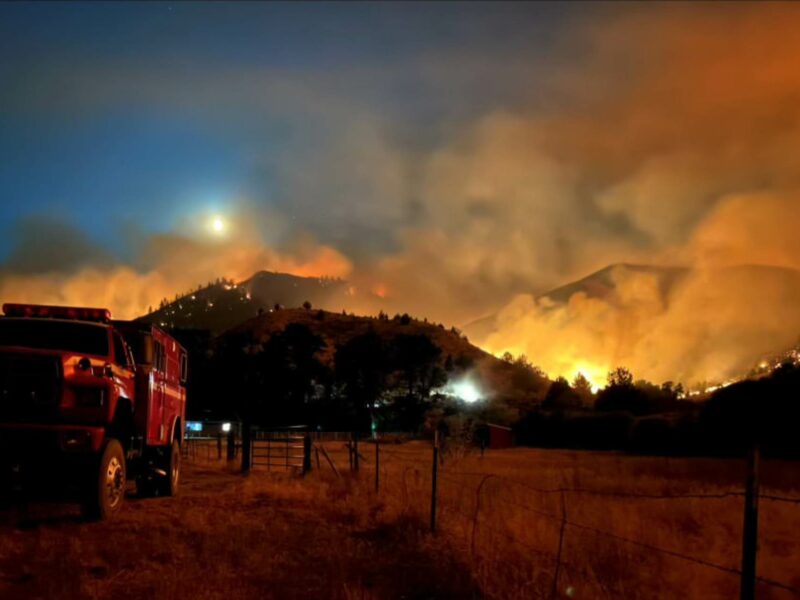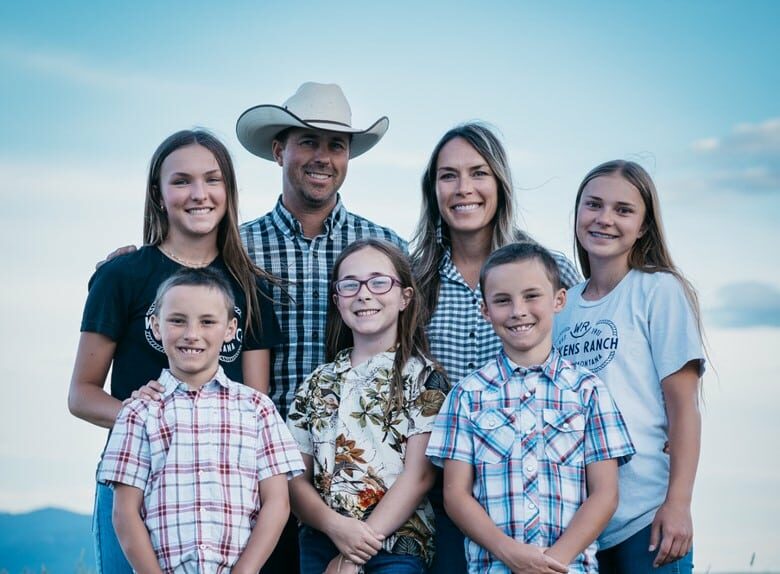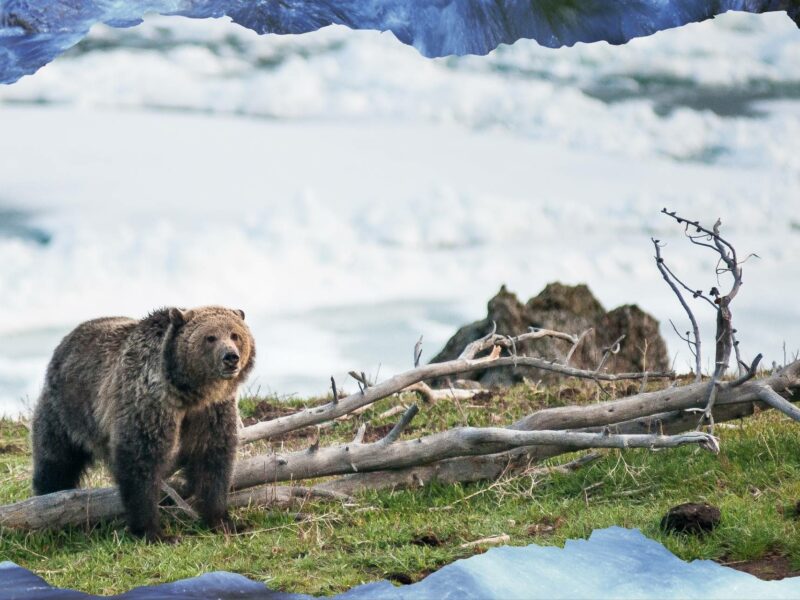Martha Williams, USFWS director, reflects on the ESA at 50
Martha Williams is the director of the United State Fish and Wildlife Service, the agency responsible for implementing the Endangered Species Act (along with NOAA’s fisheries division). She grew up on a farm in Maryland and studied law at the University of Montana. From 1988 to 2011, she served as legal counsel for the Montana Department of Fish, Wildlife and Parks. After a stint as Deputy Solicitor Parks and Wildlife in the Department of the Interior, she was appointed director of the Montana Department of Fish, Wildlife and Parks from 2017 to 2020. She is an avid outdoorswoman, hunter and angler. She spoke with Lesli Allison, CEO of Western Landowners Alliance, in August 2023 in the living room of Granger Ranches HQ in the Madison Valley of Montana. Their conversation took place after meeting with landowners and touring the ranch’s remarkable stream restoration project.
Listen
Links and references from Martha Williams, USFWS, reflects on the ESA at 50
History of the Endangered Species Act
Text of the Endangered Species Act
Episode Transcript
Lesli Allison: The Endangered Species Act is turning 50 this year. Looking back, how effective do you think it has been in conserving and recovering species?
Martha Williams: I think it’s been incredible. It has been remarkable to have a law like this that has been around for 50 years. And if you think about other laws, the Endangered Species Act really hasn’t been amended very often.
Are there things that we’ve learned? Absolutely. But think about the way in which over 99% of the species that were ever listed are still around; they haven’t blinked out. I also think of the attention that it’s brought to conservation and to the ecosystems and the wildlife that we care about so much in this country.
Lesli Allison: The ESA passed in 1973 in a landslide bipartisan vote and it was signed by a Republican president. How is it that it’s become so polarizing and so politicized today? What changed?
Martha Williams: Excellent question, and I wish I had a really good answer to it. I’d love to ask that back right back to you, Lesli.
I think first off, it is good to remember that it passed in a Republican administration under Nixon, and that it passed nearly unanimously. It came about at a time where we were losing species, and until that point, we hadn’t been thinking through our activities as humans and the impact on the environment around us. The American public said, “Let’s think about doing this in a new way. It’s good for people, it’s good for species.” That’s what the thinking was at the time.
Lesli Allison: That’s a good segue back to your question about what has happened. I think that from the landowner side of things, one real challenge has been that the ESA can be seen as inadvertently penalizing the people who are doing the most for conservation. Many landowners, including ranchers and farmers, value and enjoy wildlife very much. They don’t want to see species going extinct on their watch, on their land. And yet they also fear that having an endangered species on their property or on their public grazing allotment could put them out of business. Do you think that fear is justified?
Martha Williams: I’d like to unpack that a little bit, Lesli, because I want to recognize that landowners are so important to keeping our wild places healthy. Wild working lands are really important to community fabric and are essential to almost all species’ survival.
It is a partnership that goes hand in hand. And so, I feel as I’ve traveled around talking to landowners, by and large, they remain in awe and curious about these species just like the rest of us, if not more so. I think about going to the Rocky Mountain Front when we were really first starting to have conflicts with grizzly bears there and talking to a landowner who was worried about grizzly bears. He was really more worried about elk eating his hay… but he took me aside, away from everyone else and, said, “Hey, come look at this. I have this photo of a sow with three cubs. Can you believe this?” And I don’t think that’s unusual. It was a wonderful moment, but I think that’s very common.
We all should think through what are the pieces of the Endangered Species Act that work well and that don’t feel like they’re penalizing landowners. There’s this whole piece of it that’s not regulatory. We do so much work to not have to list species, an extraordinary amount of work. We need to remember that piece and landowners’ roles in preventing the need to list species.
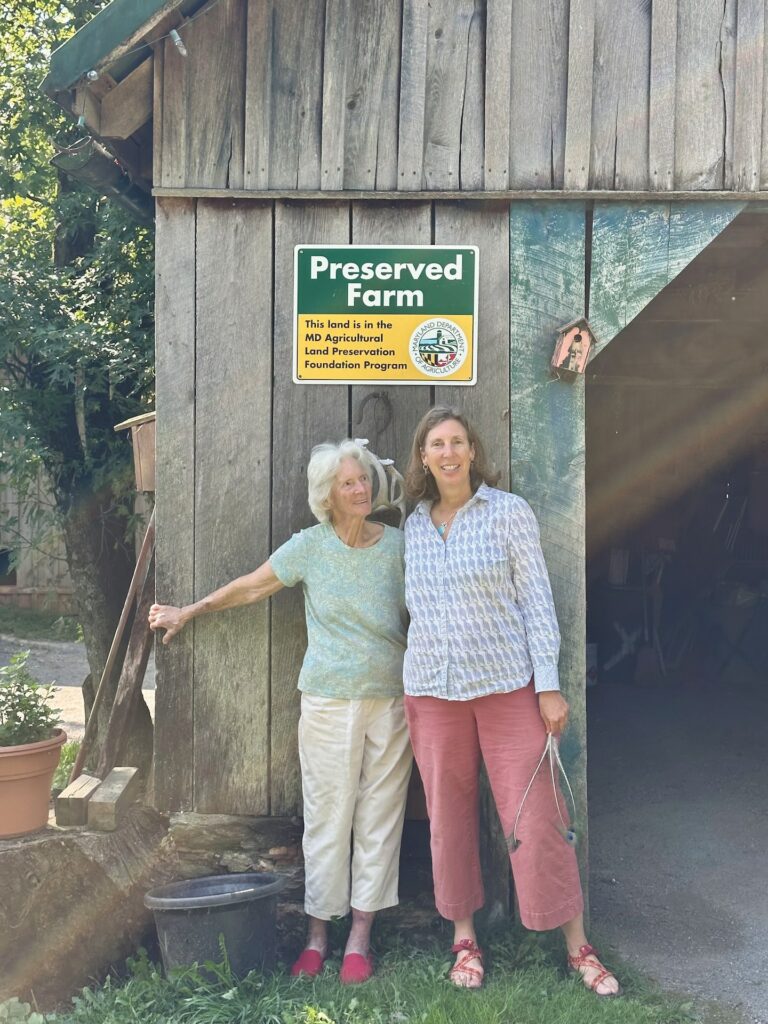
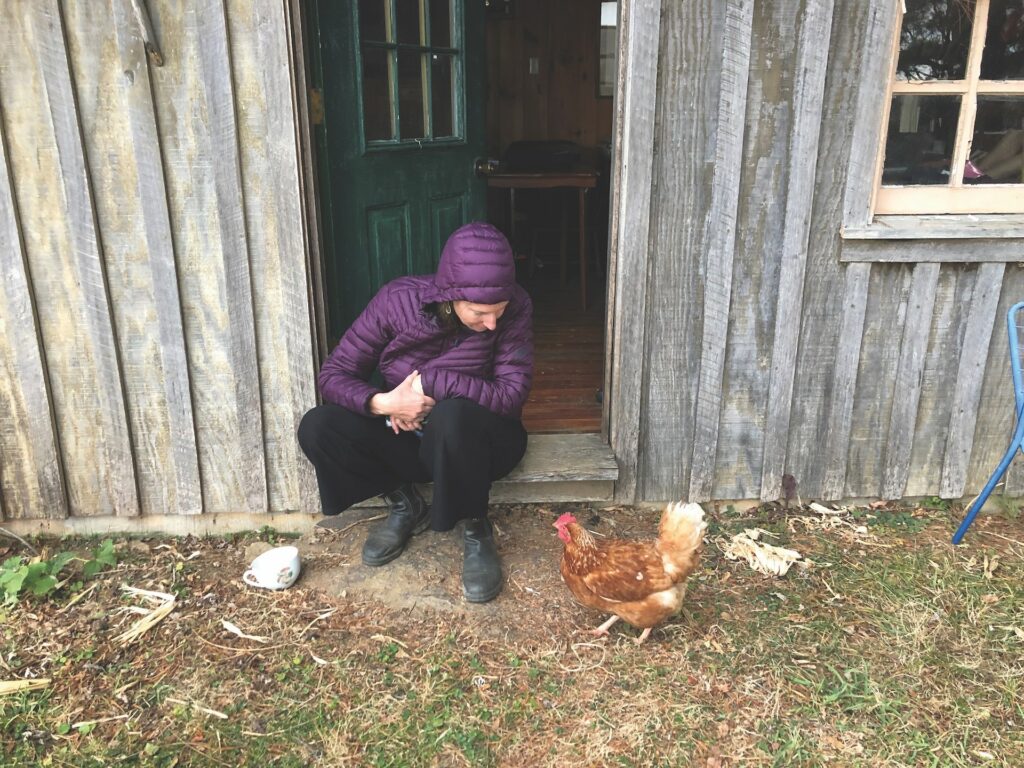
Lesli Allison: There seems to be consensus among stakeholders on the need to get out of that emergency room approach to wildlife management by implementing proactive voluntary conservation measures and avoiding that need to list species in the first place. How do we get there?
Martha Williams: We would all rather be in the space of the voluntary conservation and the partnerships that are needed to make that so effective. I do, though, believe there is a place for the Endangered Species Act, too, when that doesn’t work.
One of the problems with the Endangered Species Act right now is there is the incredible on-the-ground work, and then there’s the political rhetoric and singular focus on whether a species is listed or whether it’s delisted.
The reality is that species go through a whole continuum of recovery, of being in trouble, at risk, recovering, maybe slipping back, maybe recovering again, and that we are all talking about the long-term viability, survival, of the species in much more than four-year increments. One of the real problems has been this hyperfocus on is a species listed or not.
A lot of the fight is about listing and delisting. It’s the wrong question. Instead, we should be asking: What should we all be doing together to make sure this species stays on the landscape and we allow people to live within their communities, make a living, stay on the land and support the ecosystem functions?
I want to be careful to say I don’t discount the fear, I want to hear it and I want to learn from it, and I want us to be able to address it. There are so many projects where when the work is developed with a community, it is less vulnerable, less susceptible to that kind of litigation.
Lesli Allison: I agree that collaborative conservation really lays a path for better outcomes for everyone. As long as we’ve got all the stakeholders at the table, that works well. We do have that challenge of groups who choose not to participate, and that brings us to this sense many landowners have that no good deed goes unpunished. That’s because landowners who volunteer to conserve and recover species can be those that are at greatest risk of increased regulatory intervention and environmental litigation.
Regulatory assurance agreements such as candidate conservation agreements with assurances and safe harbor agreements were really designed to address this. However, these agreements are relatively little known within the landowner community, and they’re often very difficult for individual landowners to access. How can we change this? How can we make it better, easier for a landowner to receive that assurance?
Martha Williams: That’s a great question. And how do we help landowners know that we are there to help, that there are tools available? How do we make those tools more readily available? Where candidate conservation agreements with assurances or safe harbor agreements have been successful, for example, in the Big Hole Valley, landowners were able to opt in to a common, or umbrella, agreement. That makes it easier to get involved.
The Fish and Wildlife Service would much rather enter those agreements and prevent the need to list a species. We’re not in this wanting to list species. We want to see them conserved into the future, and so where we can make those agreements more accessible, where we can help support them, that’s something for us to talk about.
Lesli Allison: We were both involved with the Western Governor’s Association’s three-year Endangered Species initiative while you were director at FWP. There was consensus among the very diverse stakeholders across the West, including livestock groups, environmental groups, industry groups. Everyone agreed: We need to get ahead of the curve; support landowners in proactive voluntary conservation and recovery efforts.
These regulatory assurance agreements are a really key piece of that. One of the barriers is funding. There’s not a long-term source of funding for someone, whether that’s the USFWS, a state wildlife agency or a nonprofit organization, to develop those agreements and then administer those agreements over time. They’re long-term commitments, 20 to 50 years, and it’s very difficult to get that kind of appropriation, for example.
That’s one of the places that we’d love to see some more work and some political will. It’s low-hanging fruit. They’re not very expensive. That’s an opportunity for us to take this unintended disincentive out of the Endangered Species Act and be able to make it really positive for everybody when species get conserved and recovered.
Martha Williams: I would agree, Lesli, that there’s a lot of opportunity there. If we had the funding, we could do a lot more proactive work, because many landowners want that. It’s one of the reasons why there’s such interest in the Recovering America’s Wildlife Act—to help the states with funding so that species don’t get to the point of needing to be listed.
Lesli Allison: We’ve been watching some exciting movement for a while within the Fish and Wildlife Service. People are talking about it as “conservation without conflict.” We’ve seen some great successes in the Southeast and other parts of the country. Can you explain a little bit about what this is and how it came about?
Martha Williams: You have been helping, and it’s been fun to see it blossom more, as more regions and people understand the concept and the opportunity. [Conservation without conflict is] where we all work together to help prevent human-wildlife conflicts. The tolerance on the landscape, the impact to people’s livelihoods, lives, community, safety. We can be thinking about and asking, “What do you need? What does your community need? How do we help you achieve what you want to achieve and build that together?”
It’s been a shift where we’re a bit more humble and we show up and ask, “How do we meet you where you are? And we are in this for the long term. We can’t do it alone. We need you too.” I know that many people in this work have been thinking of this for a long time and have believed in it, but I’m seeing more of a shift to lifting that kind of partnership-driven work up.
Lesli Allison: If you want to see people really happy, just go out onto a project where you’ve got a landowner that’s been working with the service and other partners and is bringing back these species. It’s exciting to see those black-footed ferrets out there. It’s exciting to see little frogs making a comeback.
Martha Williams: Or seeing salmon return where they haven’t been in a hundred years, or even a landowner who has just used prescribed burns for a longleaf pine restoration and there are plants that haven’t been there for a hundred years. They’re still there in the soil, and they come back when we give them that chance.
Lesli Allison: Absolutely, and it’s something we can celebrate together. We can celebrate the role of the landowners, and we can celebrate the role of the service as a partner in conservation. That’s really a recipe for hope.
Martha Williams: I agree. And we have to take that on ourselves and be better storytellers and not be scared about talking about how it impacts our hearts and minds, and how it gets to our happiness as a species and our survival as a species.
Lesli Allison: Many landowners have expressed a preference for a multispecies habitat-based approach to wildlife conservation, because as land managers, we manage whole pieces of ground for many different values, and yet some species have very specific needs that need to be satisfied in order to reproduce or survive, for example.
In some cases, though, the needs of one species can conflict with the needs of another species on the same landscape. So how is the U.S. Fish and Wildlife Service thinking about this question of habitat-based conservation versus single-species conservation at this point?
Martha Williams: I think that is one area where the Endangered Species Act has been tough. I can think of an example of what we’re doing with our fish passage work where we got an infusion from the Bipartisan Infrastructure Law for removing fish barriers across the country. We are now working with all of our partners and all of the different federal agencies to coordinate to better sequence the projects in a watershed, and how they fit together so that we have fewer of those species-by-species conflicts.
So, that’s where I see the most hope, is in us coordinating those efforts and then showing the difference that makes. But that doesn’t mean we don’t have work to do on the singular species as well.
Lesli Allison: That brings me to this question, which is that the Partners for Fish and Wildlife Program has been consistently popular with landowners for a very long time. Can you explain the program and why you think that one has been so successful?
Martha Williams: Oh, I’m so glad you asked. I fell in love with the Partners program well before I worked for the Fish and Wildlife Service because I saw their positive impact in bringing a community together and then helping the landscape, too.
An example would be the Blackfoot Valley, where the Partners program really helped show up with others to say, “What do you envision? What do you want to see in this valley? And how do we bring all of our different pieces to bear to help build that?” At an early age, I just saw the positive impact of that type of coordination, community work.
I’d say another piece of the Partners program that’s really important is that typically our Fish and Wildlife Service Partners employees are part of the community, right? They build trust within the community and then are also there to listen and see and adjust as needed.
I think it’s that human element that the Partners program brought in, and it was a different approach that was less, “You shall do this” and more, “What do you want to see and how do we help you get there?”
I hope people are seeing a shift in the Fish and Wildlife Service, and I think that partnership-driven work is really the way to go. The way in which the Fish and Wildlife Service does its work is as important as the work that we do.
But I do not want to forget, and we may not agree on this, that the Endangered Species Act has been a backstop, and I would not want to give that backstop up. Partnership does not mean that we should give up the protection of the Endangered Species Act when we do need it.
Lesli Allison: I would agree with you, actually. I think most people recognize the need for the law, and that on the whole there are many good things that have come out of it. The challenge is how can we better implement the Endangered Species Act, not whether we should throw it out.
I’ll close with this one last question, which is, if you could wave a magic wand and change one thing to improve Endangered Species Act implementation or outcomes over the next 50 years, what would it be?
Martha Williams: I think about that question all the time, and I think of the Endangered Species Act at 50 and that it’s so important because it’s all about saving life on Earth. I think we get there by realizing that the way nature works is really important, and the question we should be asking is: How do we support people taking care of those processes that turn out to be very important to our food security, our physical security, our well-being.
We have the Endangered Species Act because there was that collective effort in this country to say, “We see what we’ve done. We don’t want to continue this, and we choose as a culture to take the costs on.”
Has it borne out differently? To some degree, yes. There is a constant tension between where the species exist and the value for those who don’t live there and may never see that species, but they want to know that that species isn’t going to blink out. We have to ask first, why are those species still there, where they are? What’s going right? How can we support that?


